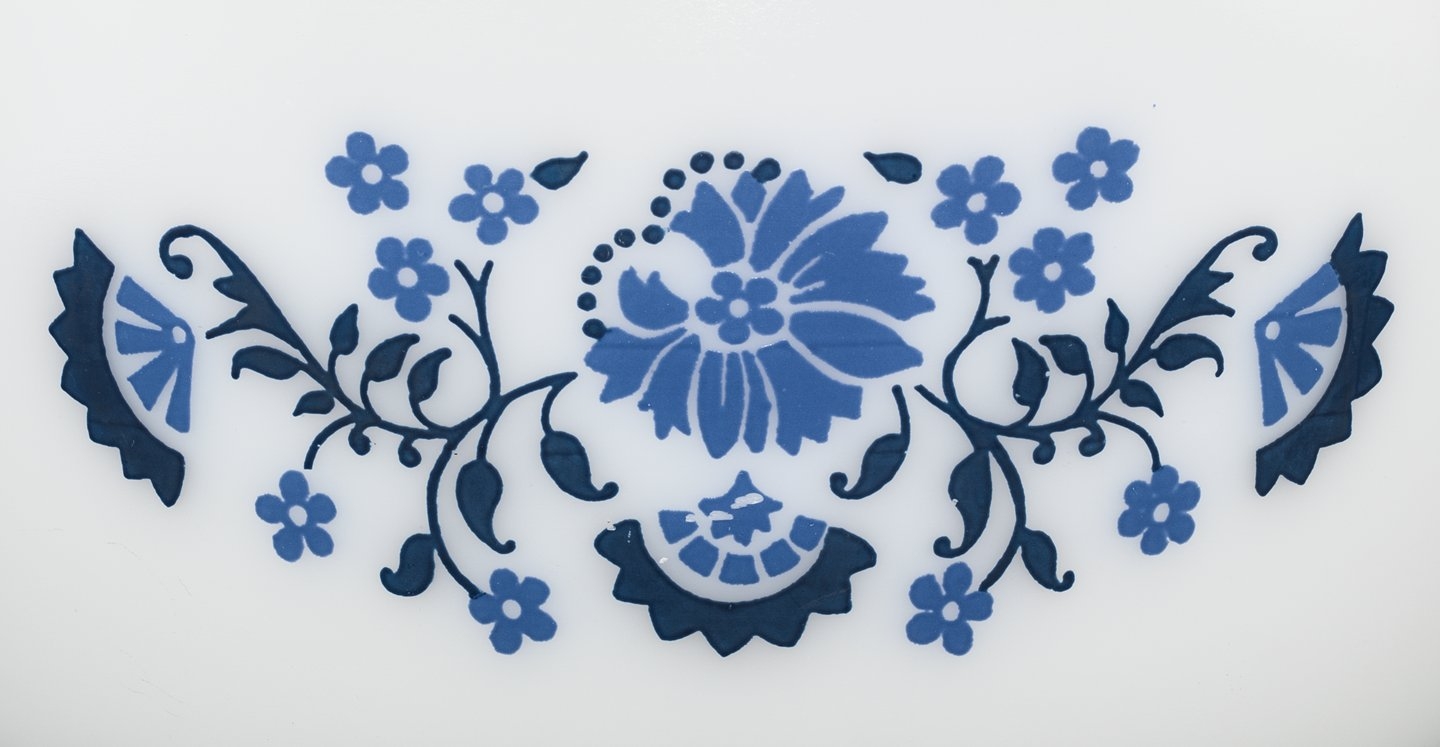Officially named Willow, this opalware one-quart Cinderella Casserole (473) was released in 1970 and had a dark blue and light blue design meant to reflect the “blue onion” motif that first appeared on Meissen china in the early 18th century. The blue onion design, copied subsequently by many other china companies, is thought to be an imitation of a Ming dynasty pattern of flowers and fruit. The European version, however, came to more closely resemble the onion from which it derives its name.
The Pyrex Willow casserole is white with a stylized blue onion motif on both the casserole dish and the opalware lid. Unofficially known as “Blue Floral,” the Willow casserole was discontinued in 1971.
Corning Glass Works offered its first patterned opalware gift set in 1953 when the Heinz Baking Dish was sold in grocery stores. Widespread distribution of promotional patterns occurred after the overwhelming success of the 1956 release of seasonal “decorator casseroles.” Using existing Pyrex shapes, gift sets featured new patterns offered for a limited production time. They often came with mounters, cradles, or candlewarmers and were advertised in the spring to appeal to Mother’s Day and summer wedding shoppers and in the fall to give the holiday gift-buyers something new. Corning continued to produce gift sets through 1983, creating nearly 135 different gift set patterns during that time. Corning intended these pieces to be sold for a limited time, and directed retailers to remove older, unsold promotions from the shelves.
Often, patterns used for these gift items were unnamed, or given names descriptive of the dish’s purpose, like “chip and dip set.” Collectors over the years have assigned names more reflective of the specific pattern.


